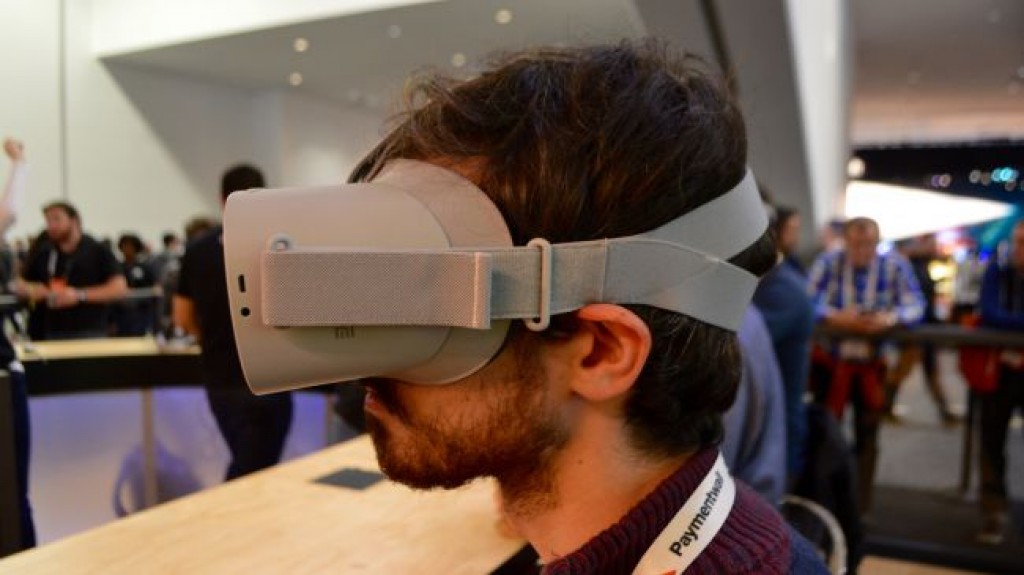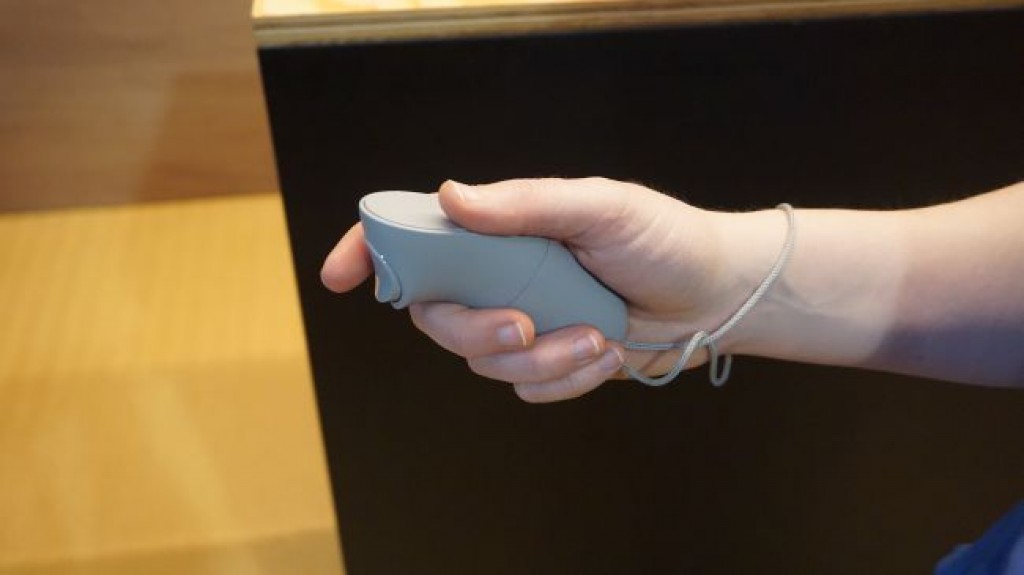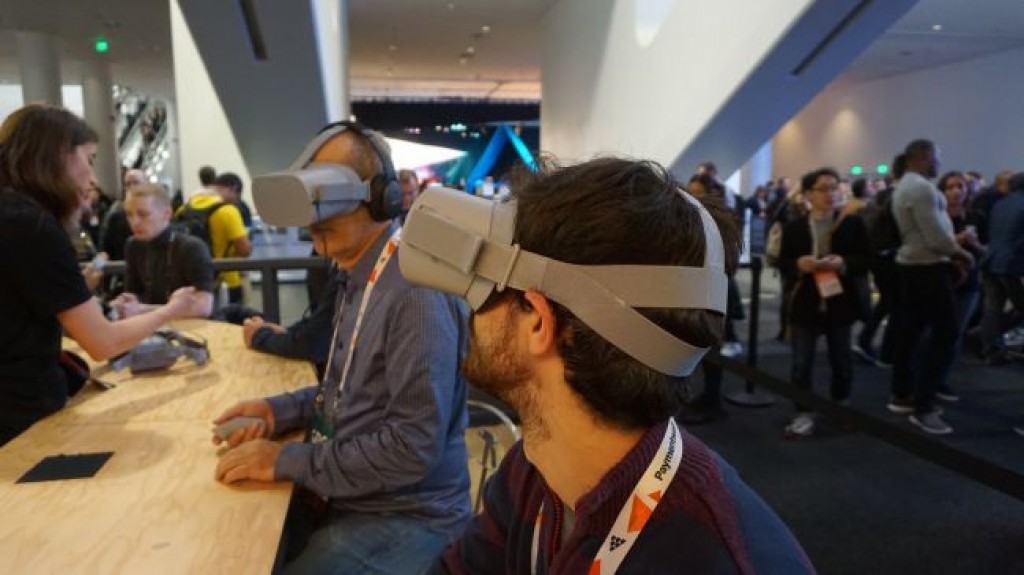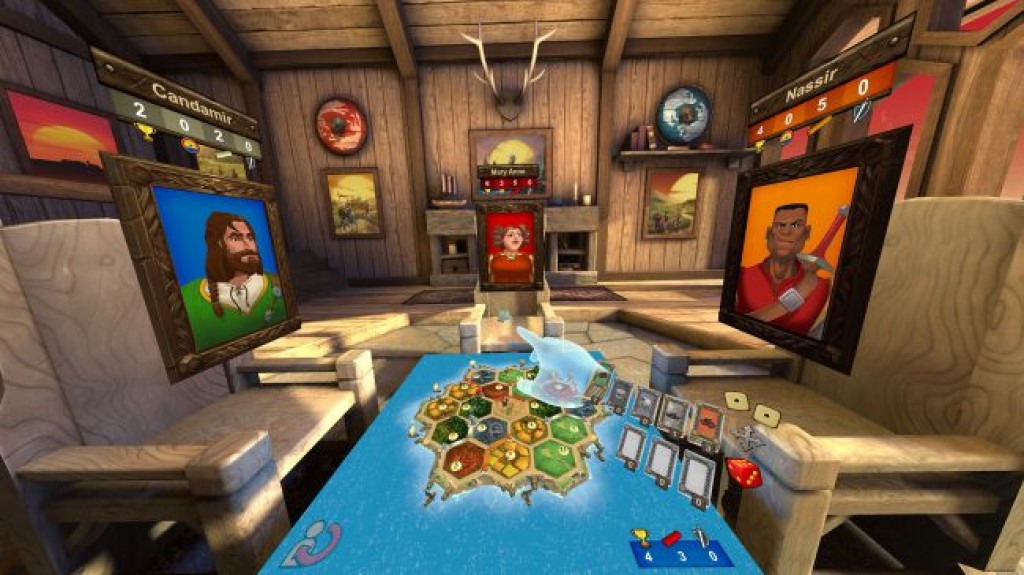
OUR EARLY VERDICT
Oculus Go wants to bridge the gap between smartphone-powered VR and the kind you need an expensive PC to operate. Though not perfect, it offers a comfortable fit, solid build, excellent visuals and the promise of more great content to come. For the price, it may give Rift a run for its money.
FOR
- No wire!
- Very good VR for a standalone device
- The price seems right
AGAINST
- Battery life is unknown
- Light comes through the bottom
- Lacks positional tracking
Oculus Go is in such a unique position. It has the heritage of the Oculus Rift, but with no PC or smartphone running the virtual reality (VR) experience, it occupies a nascent, in-between space. Not quite Samsung Gear VR, but not quite Rift, either.
In some ways that puts Oculus Go in an ideal position to bridge the gap for people who want to get into VR without necessarily owning the latest, greatest (and most expensive) phone.
It’s equally ideal for those who don’t own an expensive PC, which is required to run the nearly two-year-old Oculus Rift. Oculus Go is standalone VR, the kind of headset anyone can slip on and begin using, just about anywhere they like.
We’ve heard more than one person say this is the VR headset they want to get their parents, to give you an idea of how accessible the set-up is.

Oculus Go’s position as gap-filler is helped along by the implementation of some game-changing Oculus-made software called Fixated Foveated Rendering.
This renders the area of your vision that you’re looking at directly at the highest resolution available (2560 x 1440), while rendering everything in your periphery at a lower resolution. This allows the headset to optimize performance so it’s not running everything at maximum, yet still give users crisp visuals of what they’re focusing on.
But despite having all of the advantages of Oculus’ platform, Oculus Go now comes with some of the weaknesses.
First and foremost, we were told there is no carrying over of titles from one library to the other – i.e. if you buy a game on Oculus Rift, you might not have the game on Oculus Go. This could pose some issues for those VR enthusiasts looking to invest heavily in Oculus’ platform in every incarnation.
However, because Oculus Go is built on the same software platform as Gear VR, users will have access to every app and game available on that system. This also means developers can create one game that will port over to both platforms.
The ecosystem is starting to show some splintering, but at the core of every Rift experience a powerful, rock-steady headset that offers a good glimpse at the future of gaming and entertainment in general.
Design
The Oculus Go’s arrival is close at hand and it’s predicted to come out by Facebook’s F8 event in early May. But, that being, said, the design we saw at GDC isn’t exactly final down to the last detail, so it may change some by launch. With that in mind, we can begin to unpack how the Oculus Go feels to use.
Honestly, the first thing you’ll notice when donning the headset for the first time is that it feels a bit heavy on the face. It rests primarily on your cheeks and can really wear on those muscles (try holding a smile for 10 minutes and you’ll know exactly which muscles we’re talking about).

Still, despite the very forward weight-distribution, it’s a comfortable headset. You put it on like you would a baseball cap, and the soft, elastic straps around the back keep it snug against your head. There are Velcro clasps for further tightening, and overall the headset feels nice and secure.
It also fits comfortably over glasses, and there’s a sensation of having plenty of breathing room in the visor area (perhaps a little too much, as we’ll explain shortly).
Instead of headphones, audio is fed in from the straps themselves, and while not as immersive as what you might experience on a headset with over-ear headphones, the sound is fine enough. (
That’s not to say you can’t use the 3.5mm headphone jack located on the left side of the headset to pipe-in your own audio, you absolutely can, but you should be glad to know what Oculus Go offers is reasonably immersive all on its own.

The headset feels like a solid, well-built device. The few buttons and ports it has are discrete, allowing for a cohesive look that’s clean, if not a little dull. Perhaps an accent color would go a long way to giving the Oculus Go a bit more pop.
A big issue we encountered is that it lets a lot of light in through the bridge of the nose. Depending on how bothered you are by this kind of thing in a VR headset, this will either be a simple annoyance or, if you’re like us, potentially break the immersiveness of the VR as your stare at your hands as they use the 3DoF controller.
That 3DoF is something we’ll come back to a lot because it’s obviously a huge strength for the platform and, also, a major weakness as well.

Using a 3DoF controller is a lot like using an Oculus Touch controller in a sling. You can still move the controller left and right, but in order to move it all around, you’ll need to actually move your head as well. Not only can this be tricky to get used to if you’ve been using the Rift for the last two years, as moving forward and backwards in space with the headset – say, to place a piece on a game board – it could make porting some games over from the original Rift an impossible task.
Another issue you’ll have to worry about with the Go that you won’t have to worry about with the Rift is battery life – both of the controllers and the headset itself: Oculus wasn’t quite ready to announce how long you could expect from the Go on a single charge, but a representative of the company told us it would be all-day use … as long as you’re not using it heavily.

The final major design element we’ll mention here is the lack of wire. This is obvious, and means you can move around without a tether holding you back.
Not that we suggest you get up and wander around while wearing Go; without the wire or a boundary system, you have no idea where you are in relation to real-world objects.
However, you can swivel your head with complete freedom, and even spin 360 degrees in your chair if you’re seated. Oculus Go may be front heavy, but there’s a buoyancy to the experience without a wire holding you back.
Performance
In practice the Go is a relatively powerful little VR system. You’re not likely to mix up the Oculus Go with the Rift in terms of performance, but in many ways it matches what we’ve experienced on the Gear VR with a high-powered Samsung handset.
Helping the device close the gap, as we mentioned, is Fixated Foveated Rendering. Oculus announced the technology for the first time during GDC, and in both theory and practice it’s absolutely brilliant.

We were impressed by how sharp the resolution was when we looked directly at an object, be it a spaceship or a robot. The Oculus Go visuals are smooth and clean, and we were struck by the color vibrancy and saturation in the demos we tried.
There is a noticeable blur around the outside of your direct vision, which can come across as a bit of a lag if you’ve never seen a low-resolution texture in VR. Should you move your head to look at that same spot, the focus sharpens pretty quickly, so the effect isn’t long-lasting and we tended to forget about it after awhile.
The three Oculus Go games we tried at GDC 2018 were Settlers of Catan, based on the board game, Anshar Online, a visually stunning space shooter MMO, and They Suspect Nothing, a cartoon-styled series of mini games featuring robots.
It’s worth noting that cross-device play between Oculus Go, Oculus Rift and Gear VR is supported, as we saw when we faced off against two opponents in Settlers who were wearing Oculus Rifts. This means you can play games against a friend located in another city if you own Oculus Go and they have an Oculus Rift.

Oculus Go performed more than admirably in our demos, which is pretty outstanding considering it’s a standalone device. One noticeable omission, though, is positional tracking.
Oculus Go doesn’t track your real-world position, like the Oculus Rift. This means you can’t physically move and have the headset reflect that movement – everything stays fairly static. You can’t lean in to look more closely at the Settles of Catan game board, for example, or change your bearings as you fly around in Anshar Online.
This extends to the 3DoF controller. Unlike Oculus Touch, which consists of a pair of controllers that let you move your hands and see those movements mimicked in VR, the Go controller is essentially a point-and-click remote.
The lack of positional tracking didn’t necessarily detract from the experiences, though if you go from Go to Rift and back to Go again, you’ll certainly notice its absence.
Early verdict
Oculus Go is a good VR device, made even better by the fact that it’s powering everything you see without the help of a smartphone or PC.
It’s well-built, comfortable and capable. We’ll need more time with the headset to make a full assessment, but our initial look was a promising one. If there’s enough high-quality content to play and the battery life is sufficient, this could be the VR headset we see under many Christmas trees later this year.
A big point in the Oculus Go’s favor is its price. While $199 (about £150 / AU$255) is not inexpensive, it feels reasonable for what you’re getting here. Again, we’ll need to spend more time with the final unit when it’s ready, but at this juncture, Oculus Go is off to a promising start.
Source: techradar.com









































